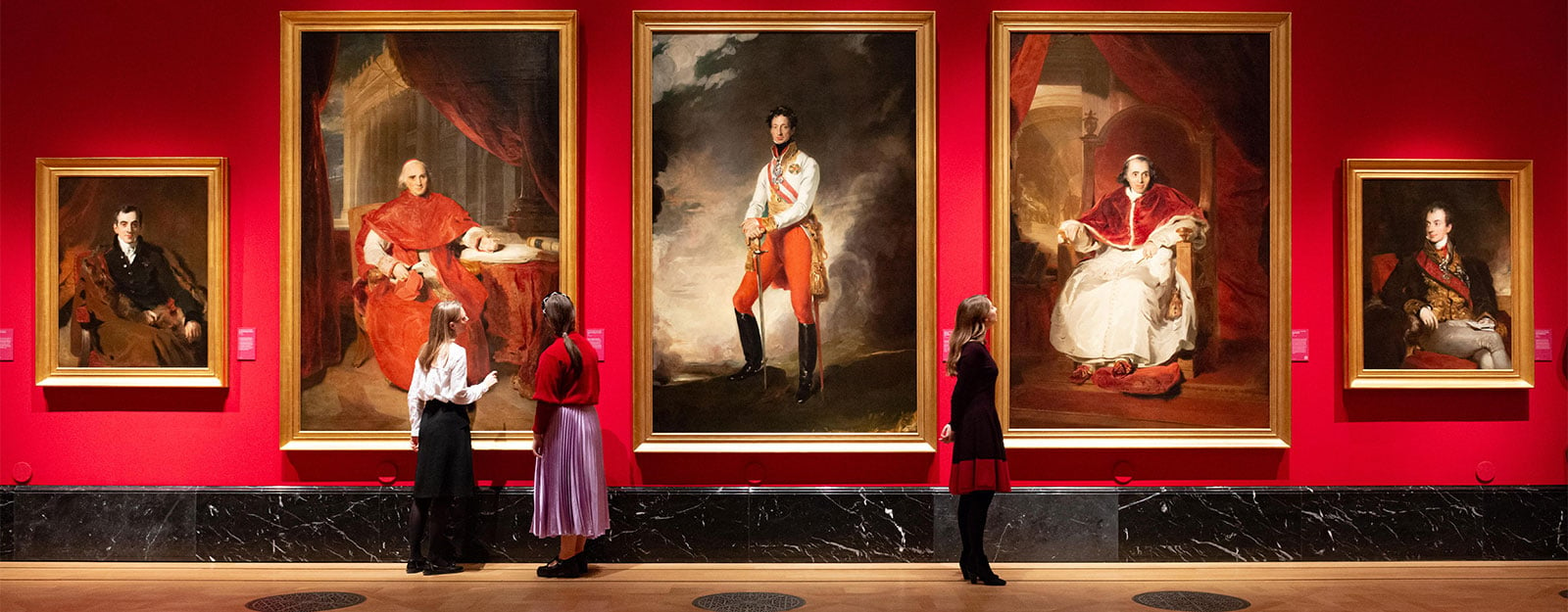
About the Collection
Learn more about the Royal Collection, one of the most important art collections in the world.
Early printed books, manuscripts, fine bindings and private presses
Incunabula
The Royal Library holds over 250 incunabula, so-called because they date from the cradle of printing (the term comes from the Latin meaning cradle or swaddling clothes). While a press had been used for printing at an earlier date, the great innovation was printing with movable metal type, which was developed by Johannes Gutenberg in the 1450s. The term ‘incunabula’ refers to books printed during this early period, up to 1501.
The development of mechanical printing allowed books to become much more readily available, making them highly significant for, and central to, the technological and intellectual achievements of the European Renaissance. In the Library, they were primarily collected by George III, George IV and William IV with later additions by Queen Victoria, King Edward VII and King George V.
One of the highlights of this section is the Mainz Psalter (1457), presented to George III in 1800. It is the second printed book ever published, and the first with rubricated (red as well as black) printing. The Royal Library’s copy is one of only ten copies in existence, and as such, it is rarer than the Gutenberg Bible.
Western Manuscripts
The important collection of Western Manuscripts held by the Royal Library include Lord Byron’s autograph manuscript of The Two Foscari (1821) and the sixteen volume manuscript diary, as well as some of the papers, of the artist Joseph Farington, which is an invaluable guide to British society between 1792 and 1821.
However, perhaps most important among the Royal Library’s collection of manuscripts are two Books of Hours, Cardinal York’s Hours (c.1500) and the Sobieski Hours (c.1420), both presented following the death of Henry Benedict Stuart, Cardinal York, in 1807.
South Asian, Islamic & Ethiopic Manuscripts
Acquired in the eighteenth and nineteenth centuries, this is a significant collection of Indian, Persian and Ethiopic manuscripts, written in most of the major scripts of South Asia and Ethiopia.
Included in this collection is The Padshahnama (1630–57), one of the finest Mughal manuscripts ever produced, which tells the history of the reign of Shah Jahan (r. 1628–58) and bears exquisite likenesses of members of his court.
Fine Bindings
The Royal Library holds an exceptional collection of finely bound books in a wide variety of styles and materials. The collection is particularly rich in bindings thought to have a Royal provenance, many of which were reacquired in the nineteenth and twentieth centuries.
Private presses
Private press books, printed in the late-nineteenth and early-twentieth centuries in emulation of early printing, form a notable collection in the Royal Library. Examples include William Morris’s translation of Beowulf (1895) and Eric Gill’s The Four Gospels (1931).







